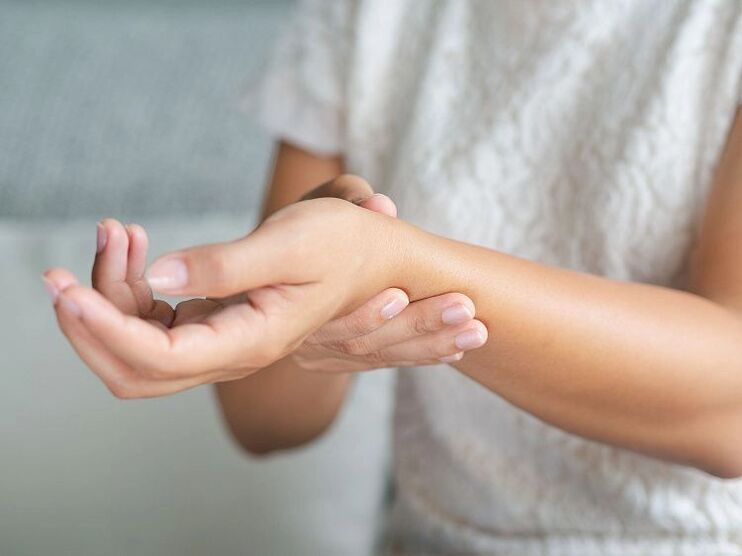
Osteoarthritis is often accompanied by arthritis, an inflammatory process in the joint tissues. Arthropathy involves destruction and deformity of a specific area. Both syndromes affect the patient's quality of life and require early detection and treatment.
Reasons
More often, degenerative joint tissue diseases develop after physical exertion or as the body ages. Arthritis and gout have many common causes:
- hereditary predisposition?
- infectious diseases with a severe course.
- incorrect concentration of hormones in the body.
- autoimmune disease;
- intense physical activity, overexertion.
- joint damage;
- congenital abnormalities in the development of synovial tissue.
- complication after surgical treatment.
- alcohol abuse?
- hypothermia of the body;
- frequent stressful situations.
Quote from an expert
Over time, arthritis can lead to arthritis. And arthritis leads to joint disease. That is, these diseases most often come in pairs, but they can also appear separately as independent diseases. You just have to keep in mind that if arthritis is not treated, arthritis will occur.
What does arthritis mean in arthropathy?
The inflammatory process is often detected when the cartilage is destroyed. This may indicate the following problems in the body:
- an infectious focus with arthropathy, damage to the circulatory system and organs of the gastrointestinal tract is possible. This causes an inflammatory process in the joint.
- weakening of muscle and bone tissue. The patient has progressive instability of the upper and lower limbs.
- weakened immunity, the body cannot deal with irritants from the external environment.
- disruption of the functioning of internal systems.
varieties
There are several possible types of arthritis when cartilage is affected:
- reactive, develops when infected with a pathogenic microorganism. It is more often found in people suffering from chronic diseases.
- Rheumatoid arthritis involves the spread of the inflammatory process in the connective tissues, causing limitations in the mobility of the upper and lower extremities.
- crystalline, evolves with reduced metabolism. It is characterized by a high concentration of salts in the body.
- psoriatic form, the risk of skin diseases increases. Arthritis is accompanied by edema, swelling in various parts of the body.
- infectious develops in the context of various infections of an acute or chronic nature. It is most often diagnosed in large synovial tissues.
What can it be confused with?
Arthritis symptoms are similar to lupus, Raynaud's disease, and fibromyalgia. It is expressed in chronic fatigue, increased temperature, limited movement and painful sensations.
How to get rid of the symptoms of arthritis with arthropathy
To relieve the symptoms of the inflammatory process and improve your well-being, it is recommended to follow the following rules:
- stop drinking alcohol, drugs, smoking.
- avoid stressful situations.
- normalize your diet.
- exercise daily?
- walk in the fresh air more often.
- control of the level of pressure in the blood vessels.
- harden in the morning.
- avoid passive smoking.
When and which doctor to contact
An arthrologist treats the inflammatory process in the tissues of the joints. If the patient does not have the opportunity to consult a specialist in this profile, it is recommended to make an appointment with an orthopedic or traumatologist. You should seek help when you notice the first symptoms of the disease.
Treatment of arthritis with arthropathy
Before starting treatment, a diagnosis is required. Doctors will perform an external examination of the patient, interview him and prescribe blood and urine tests. If necessary, arthrography, radiography, magnetic resonance imaging and computed tomography are used. Based on the information received, the patient is given a course of treatment.
Pharmaceutical treatment
It is possible to get rid of the symptoms in the initial stages of the disease with the help of drugs. The patient is prescribed a complex of drugs to achieve greater effectiveness:
- non-steroidal anti-inflammatory drugs relieve the patient of pain.
- Chondroprotectants speed up cartilage repair.
- muscle relaxants eliminate spasms and discomfort.
Surgery
In severe cases, in the presence of complications or in the final stages of the disease, surgical treatment is prescribed. The patient either has the affected joint tissue removed and an implant is placed, or the synovium is removed.
Conservative therapy
Along with medication, the patient is prescribed massage treatments, a physical therapy class is prescribed, and the diet is adjusted. Therapeutic baths help relieve pain. Physiotherapy prevents the development of the inflammatory process and accelerates the recovery of the affected joint tissue.






























